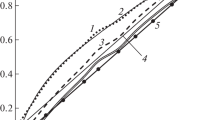Abstract
A computational model and a computer simulation system are presented for image sensing in a typical CCD camera system. The computational model makes explicit the sequence of transformations that the light incident on the camera system undergoes before being sensed and recorded. The model is based on a precise definition of input to the camera system that decouples the photometric properties of a scene from the geometric properties of the scene. Based on this model, an interactive research software, the Image Defocus Simulator, has been developed. Application of this software in machine vision research and development is described with examples.
Similar content being viewed by others
References
Aho AV, Sethi R, Ullman JD (1986) Compilers: principles, techniques, and tools. Addison-Wesley, Reading, Mass
Born M, Wolf E (1980) Principles of optics. 6th edn, Pergamon Press, Oxford
Chen YC (1987) Lens effect on synthetic image generation based on light particle theory. Comput Graph, pp 347–366
Foley JD, van Dam A, Feiner SK, Hughes JF (1990) Computer graphics: principle and practice. 2nd edn, Addison-Wesley, Reading, Mass
Goodman JW (1968) Introduction to Fourier optics. McGraw-Hill, San Francisco
Healey G, Kondepudy R (1992) Modeling and calibrating CCD cameras for illumination insensitive machine vision. Proceedings of Optics, Illumination, and Image Sensing for Machine Vision VI, SPIE, vol 1614, pp 121–132
Hecht E (1987) Optics, 2nd edn, Addison-Wesley, Reading, Mass
Hopkins HH (1955) The frequency response of a defocused optical system. Proceeding of the Royal Society of London, A 231:91–103
Horn BKP (1986) Robot vision. McGraw-Hill, New York
Levine MD (1985) Vision in man and machine. McGraw-Hill, New York
Lu MC (1993) Computer modeling and simulation techniques for computer vision problems. Ph.D. dissertation. Department of Electrical Engineering, State University of New York at Stony Brook, N.Y
Lu MC and Subbarao M (1992) Image defocus simulator: a software tool. Technical Report No. 92.05.27, Computer Vision Laboratory, Department of Electrical Engineering, State University of New York, Stony Brook, N.Y
Oppenheim AV, Schafer RW (1989) Discrete-time Signal Processing. Prentice-Hall, Englewood Cliffs, N.J
Potmesil M, Chakravarty I (1982) Synthetic image generation with a lens and aperture camera model. ACM Trans Graph 1:85–108
Rosenfeld A, Kak AC (1982) Digital picture processing. 2nd edn, Academic Press, New York
Shafer SA (1988) Automation and calibration for robot vision systems. Technical Report No. CMU-CS-88-147, Computer Science Department, Carnegie Mellon University, Pittsburgh, Pennsylvania
Sproson WN (1983) Colour science in television and display systems. Adam Hilger, Bristol
Subbarao M (1988) Efficient depth recovery through inverse optics. In: Freeman H (ed) Machine vision for inspection and measurement. Academic Press, Boston, pp 101–126
Subbarao M (1990) On the depth information in the point spread function of a defocused optical system. Technical Report No. 90.02.07, Computer Vision Laboratory, Department of Electrical Engineering, State University of New York, Stony Brook, N.Y
Subbarao M, Nikzad A (1990) Model for image sensing and digitization in computer vision. Proceedings of SPIE Conference, OE/90, Boston, vol 385, pp 70–84
Subbarao M, Surya G (1992) Application of spatial-domain convolution/deconvolution transform for determining distance from image defocus. Technical Report No. 92.01.18, Computer Vision Laboratory, Department of Electrical Engineering, State University of New York, Stony Brook, N.Y
Subbarao M, Wei TC (1992) Depth from defocus and rapid autofocusing: a practical approach. Technical Report No. 92.01.17, Computer Vision Laboratory, Department of Electrical Engineering, State University of New York, Stony Brook, N.Y (An abbreviated version appears in Proceedings of the IEEE Computer Vision and Pattern Recognition '92:773-776)
Author information
Authors and Affiliations
Rights and permissions
About this article
Cite this article
Subbarao, M., Lu, MC. Image sensing model and computer simulation for CCD camera systems. Machine Vis. Apps. 7, 277–289 (1994). https://doi.org/10.1007/BF01213418
Issue Date:
DOI: https://doi.org/10.1007/BF01213418




